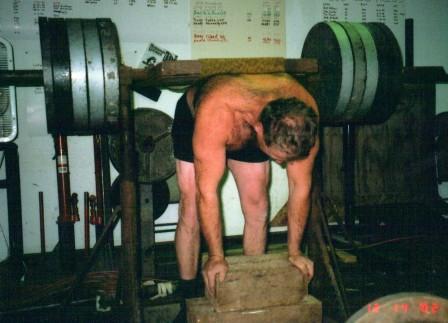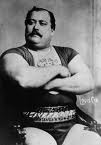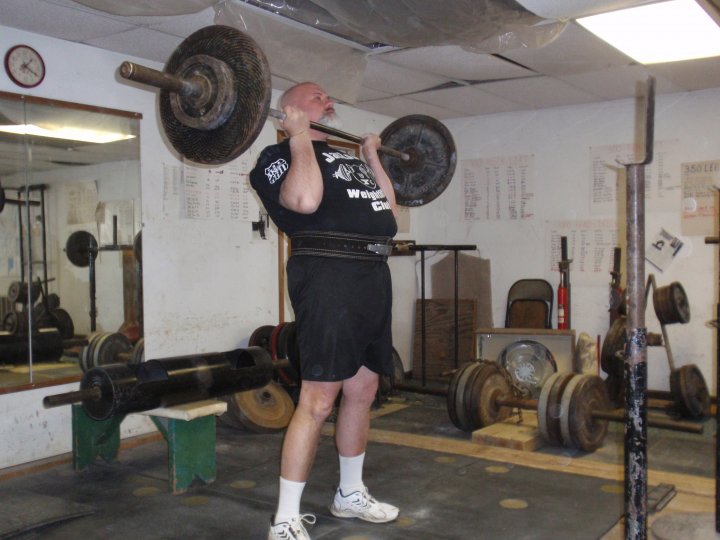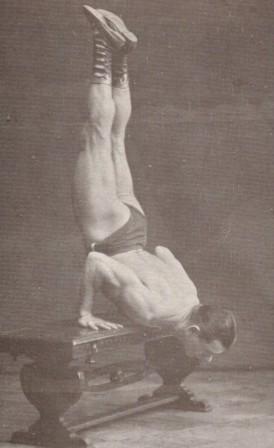The One and Only Steve Schmidt
There is only one SUPER HEAVY LIFT LIFTER:
THE ONE and ONLY STEVE SCHMIDT
by Dale E. Friesz
What follows is a history of the male and female winners of what has progressed, in name only, from the STRONGMAN PENTATHLON, to the SCHMIDT’S PENTATHLON, to the SCHMIDT’S BACKBREAKER PENTATHLON, to the USAWA NATIONAL HEAVY LIFT CHAMPIONSHIPS, to the STEVE SCHMIDT’S BACKBREAKER, and to the USAWA HEAVY LIFT CHAMPIONSHIPS. The data source is our former organization’s newsletter written by Bill Clark, the STRENGTH JOURNAL. I believe it is safe to assume that Bill Clark was involved in the meet name changes. The same five lifts have been contested since the first meet on 11/25-1986 – the lifts are the NECK LIFT, the HAND & THIGH, the HIP LIFT, the HARNESS LIFT, and the BACKLIFT. It seems that Steve Schmidt, together with Bill Clark, conceived of the meet as it contains the four chain lifts and the biggest lift of all the USAWA – the BACKLIFT. Steve has competed in 14 of these meets since the first in 1986 in his yard and barn in Sullivan, Missouri. He is UNDEFEATED! The small table that follows shows how Steve has managed to cheat father time:
| TOTAL | YEAR | LOCATION | BWT | AGE |
| 10377 | 1991 | Sullivan | 220 | 36 |
| 10231 | 1988 | Sullivan | 223 | 33 |
| 10219 | 1992 | Sullivan | 209 | 37 |
| 10200 | 1987 | Sullivan | 218 | 32 |
| 10037 | 1989 | Sullivan | 220 | 34 |
| 9647 | 1990 | Sullivan | 219 | 35 |
| 9645 | 2004 | Columbia | 220 | 49 |
| 9415 | 2008 | Columbia | 224 | 53 |
| 9345 | 2007 | Columbia | 224 | 52 |
| 9330 | 1986 | Sullivan | 224 | 31 |
| 9315 | 2005 | Columbia | 218 | 50 |
| 9305 | 2003 | Columbia | 208 | 48 |
| 9160 | 2006 | Columbia | 223 | 51 |
| 9055 | 2002 | Columbia | 209 | 47 |
I have enjoyed the recent forum discussions that Steve’s apparatus and large diameter heavy bar made it possible for him to lift such “unreal” poundages. Also, as he aged he was not able to lift as much weight. I point out that no one has been able to beat him regardless of the equipment used. Also, that after nearly a quarter century of training he cracked the 3000 pound backlift ceiling twice in one meet, maxing at 3050 pounds. Big Al was very much present when it was done as it took place in his gym, using his state of the art backlift equipment.



